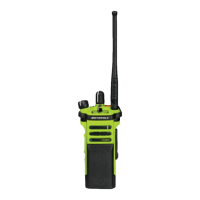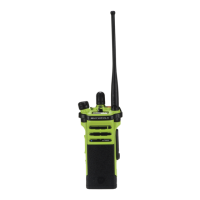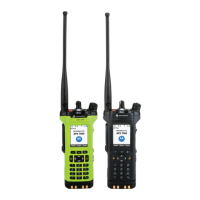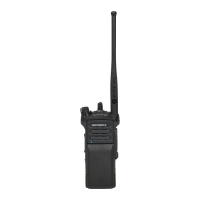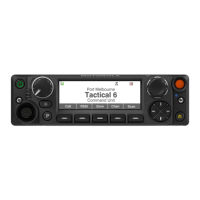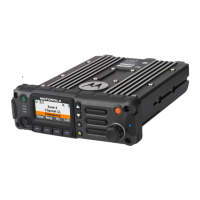3-8 Basic Theory of Operation: Analog Mode of Operation
3.2.2.2 UHF1/UHF2 Transmit
Once a UHF frequency for transmit has been selected, the Trident IC and the accompanying logic
circuitry will enable the voltage controlled oscillator which then generates the desired transmit
frequency. This transmit signal is then routed to the TX buffer amplifier which amplifies the signal.
The signal is routed to the UHF1/UHF2 Driver amplifier and then to the discrete final power amplifier.
The signal now goes through the antenna switch which routes the power to the harmonic filter which
will filter out the harmonics of the carrier signal and then passes through a directional coupler. The
Log Amp power detector Monitors the output of the directional coupler and adjusts the control
voltages to the driver amplifier and final power amplifier. Finally, the RF signal is routed to the main
antenna.
3.2.2.3 700/800 MHz Transmit
Once a 700/800 MHz frequency for transmit has been selected, the Trident IC and accompanying
logic circuitry enable the correct voltage controlled oscillator which then generates the desired
transmit frequency. This transmit signal is then routed to the TX buffer amplifier which amplifies the
signal. The signal is routed to the 7800 Driver amplifier and then to the discrete final power amplifier.
The signal now goes through the antenna switch which routes the power to the harmonic filter which
will filter out the harmonics of the carrier signal and then passes through a directional coupler. The
Log Amp power detector Monitors the output of the directional coupler and adjusts the control
voltages to the driver amplifier and the discrete final power amplifier. Finally, the RF signal is routed
to the main antenna.
3.2.2.4 900 MHz Transmit
Once a 900 MHz frequency for transmit has been selected, the Trident IC and accompanying logic
circuitry enable the correct voltage controlled oscillator which then generates the desired transmit
frequency. This transmit signal is then routed to the TX buffer amplifier which amplifies the signal.
The signal is routed to the 900 MHz Driver amplifier and then to the discrete final power amplifier.
The signal now goes through the antenna switch which routes the power to the harmonic filter which
will filter out the harmonics of the carrier signal and then passes through a directional coupler. The
Log Amp power detector Monitors the output of the directional coupler and adjusts the control
voltages to the driver amplifier and the discrete final power amplifier. Finally, the RF signal is routed
to the main antenna.
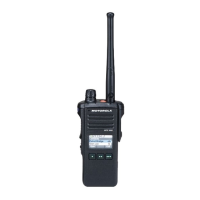
